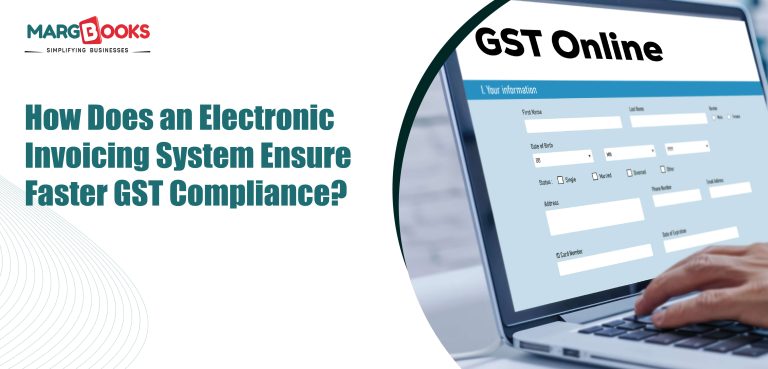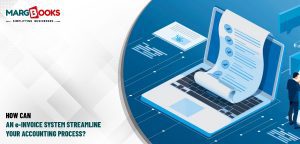Running a business in India means dealing with GST returns every month. If you’re still managing invoices manually or using basic spreadsheets, you’re probably spending way too much time on compliance tasks. An electronic invoicing system changes everything by automating calculations, organizing records.
This also includes ensuring your GST filings are accurate from day one. Instead of scrambling at month-end to gather documents and fix errors, you can focus on what grows your business. Let’s explore how going digital makes GST compliance faster and stress-free.
How an Electronic Invoicing System Transforms GST Filing?
Think about Rajesh, who runs a wholesale electronics business in Delhi. Every month, he used to spend three full days compiling invoices, matching purchase records, and calculating GST amounts. Half the time, he’d know mistakes that meant starting over. Since switching to digital invoicing, his monthly GST filing takes just a few hours. That’s the power of automation.
Real-Time Tax Calculations Mean No More Manual Errors
When you create an invoice through an electronic invoicing system, the software automatically calculates CGST, SGST, and IGST based on your customer’s location and product categories. No more wondering if you’ve applied the right tax rate or worrying about computational mistakes.
Take Priya’s textile business in Surat. She deals with different GST rates for various fabric types, some at 5%, others at 12% or 18%. Before going digital, she constantly mixed up rates, especially during busy seasons. Now her system picks the correct rate automatically based on HSN codes, and she hasn’t had a single calculation error in months.
Automatic Record Organization Saves Hours of Work
Here’s what happens behind the scenes: every invoice gets tagged with the right details, sorted by date and customer, and stored in GST-ready formats. When filing time comes, you’re not hunting through piles of papers or scrolling through endless computer folders.
A chemist chain in Mumbai started using MargBooks for their invoicing, and the owner mentioned how their accountant now finishes GST returns in half the time. Everything’s already organized exactly how the government portal expects it.
Built-in GSTR Report Generation
Most GST billing software comes with pre-built report templates that match government filing formats perfectly. You can generate:
- GSTR-1 reports for outward supplies with all customer details.
- GSTR-3B summaries with automatic liability calculations.
- Purchase registers that align with your input tax credits.
- HSN-wise summaries without manual categorization.
- Error reports that highlight missing or incorrect information before submission.
This means no more formatting headaches or wondering if you’ve missed something important.
Why Speed Matters More Than You Think?
Late GST filings attract penalties and interest charges that add up quickly. More importantly, delays create cash flow problems when your input tax credits get stuck in processing with the electronic invoicing system.
Consider this scenario: you file your GSTR-1 late, which delays your customer’s input credit claims. Unhappy customers might start looking elsewhere, especially in competitive markets. Fast, accurate filing keeps everyone happy and your business relationships strong.
Mobile Access for Busy Entrepreneurs
Modern invoicing systems work on smartphones and tablets, not just computers. You can create invoices while meeting clients, check GST liability while traveling, or approve pending bills during your lunch break.
An electronics retailer from Chennai uses MargBooks on his phone to generate invoices right at the customer’s location. He emails or WhatsApps invoices instantly, and customers love the professional touch.
Integration with Banking and Inventory Systems
Smart business owners are connecting their invoicing software with other tools they already use. When your online invoice software talks to your bank account, it can automatically match payments with invoices. Connect it to inventory management, and stock levels update in real-time with an electronic invoicing system.
A distributor in Pune told us how MargBooks integrated with his existing setup, making everything work together smoothly. He doesn’t have to enter the same information in multiple places anymore.
Backup and Security You Can Trust
Paper invoices can get lost, damaged, or misplaced. Digital systems store everything in multiple locations with automatic backups. During the monsoon floods in Kerala, several businesses lost physical records but continued operating smoothly because their digital invoices were safe in the cloud.
Plus, you get detailed audit trails showing exactly when each invoice was created, modified, or sent. This transparency helps during tax assessments and keeps your records clean.
Conclusion
Switching to an electronic invoicing system isn’t just about keeping up with technology. It’s about reclaiming your time and reducing compliance stress. When GST calculations happen automatically, records stay organized, and reports are generated with a few clicks, you can focus on growing your business instead of managing paperwork.
Indian entrepreneurs who’ve made this transition consistently report faster filings, fewer errors with MargBooks, and significantly less month-end anxiety. The question isn’t whether you should go digital, but how quickly you can make the switch and start enjoying these benefits.




